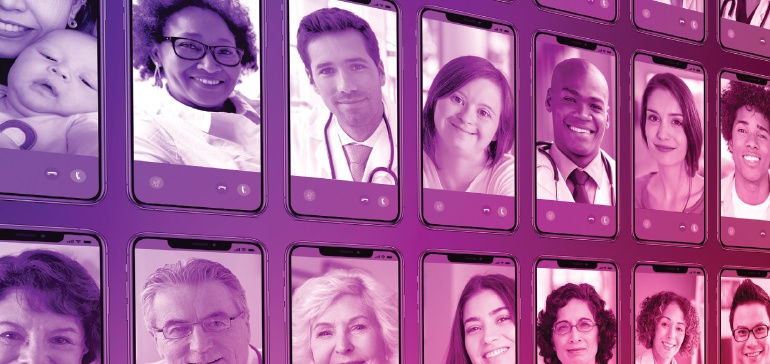
The unprecedented pandemic of COVID-19 has ushered in a new age of telehealth that has not always been present—but a phase that many hope is here to stay. Between 2016 and 2019 alone, tele-visit usage doubled from 14 to 28 percent. The health care industry has seen an upward trend in adopting digital health solutions for improved patient care, like tele-visits and remote patient monitoring, even prior to COVID-19.
According to the American Medical Association (AMA) research, tele-visit usage doubled from 14 to 28 percent between 2016 and 2019.
Although the story being written from telehealth usage data is not yet concluded, its past narrative dictates the anecdote of the future.
- 48% of physicians are using telehealth for the first time
- 90% of physicians have now treated patients remotely
- 68% of physicians believe it will have a lasting impact on how doctors see patients
- 77% of physicians support the shift towards telehealth
- 1/5 of physicians expect to use telehealth solutions significantly more than they did pre-COVID
It is clear from this data that, to almost half of physicians, using a solvent of digital health tools to treat their patients was unfamiliar. Now, over three-fourths of physicians see its value.
“Through telehealth, we can triage patients and help avoid unnecessary visits to health care settings, thereby reducing exposure to the COVID-19 virus and helping to keep our front lines safe, ensuring they have the resources needed to take on this immense challenge,” says Russell Libby, MD, a pediatrician and board member at Physicians Foundation.
Clinicians are connecting with patients—as well as with one another—in both real-time and asynchronously through telehealth’s myriad tools and platforms. Delivering care through these vehicles has been an option for many years, but its use has been limited by challenges surrounding coverage, payment, regulatory requirements, licensure and technology.
Industry impact amidst a pandemic
The AMA’s strides in digital health have been mixed into a concoction of efforts during COVID-19, proving likely impact. Expansion of coverage and lifting of geographic restrictions with other policy changes have supported access to telehealth services during the public health emergency.
“The tools and guidelines being created now are already helping many to use telehealth and will continue to help define its role at this moment and shape the future of physician practice,�? says Libby.
No one could have predicted the public health emergency and the impact it would have on the health care industry; but with the explosion of telehealth use during the COVID-19 pandemic, doors have opened to collect data to assess its impact on cost savings, access and quality of care.
Demand for vendor solutions
Vendors have experienced an influx in demand for their solutions providing video visit capability, remote monitoring and other asynchronous ways to connect physicians and patients virtually. With such a significant, rapid increase in demand, it has been challenging for vendors to keep up at times; however, the United States Department of Health and Human Services has relaxed its enforcement of privacy law on telehealth during the public health emergency (PHE), making it easier for many physicians to utilize non-traditional telehealth technologies like FaceTime and Skype for video visits and easing burden on vendors.
It’s unclear which, if any, of the changes made during the COVID-19 pandemic will remain in place permanently, but as data privacy and security remains a hot topic across the industry, telehealth vendors can likely expect an additional surge at some point if these technologies are no longer able to be used to facilitate video visits.
The pandemic has shined a spotlight on the need for preparedness, connectivity and the ability for care to be provided remotely. Some of these virtual services have been set-up quickly to facilitate care during the PHE, but for long-term use and scale, may need to take a few steps back and adjust once the dust settles.
Similar to many other health care technologies, numerous factors exist, driving adoption and scale. Vendors do have the ability to control key areas that are important for end-users, including usability, customer service, interoperability and privacy and security practices.
Sustaining the momentum
Imagining telehealth before COVID-19 in many aspects will be like trying to recall a time before hospitals and clinics. Utilization and outcomes data, and physician and patient experiences will be crucial to showing the long-term value of telehealth.
Even then, there are still barriers for some practices and patients in accessing telehealth services because of a lack of technology or adequate internet and broadband access. But in a time where it was needed most, telehealth stepped up to support social distancing, while allowing patients access to health care and physicians to continue remotely caring for their patients.
While navigating the current and future environment, the AMA is committed to driving forward the adoption of responsible, impactful and equitable tech-enabled telehealth innovation. Telehealth is no longer a luxury, it’s a necessity.
References
Bain & Co, “US Doctors turn to Telehealth as COVID-19 limits In-person Care,” 4/17/20, and Sermo, HCP Telehealth Sentiment Survey, April 2020
